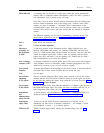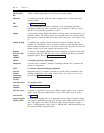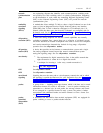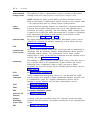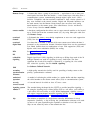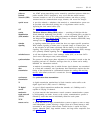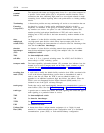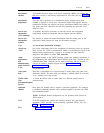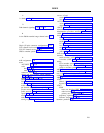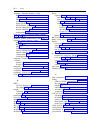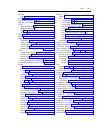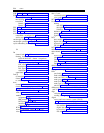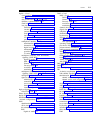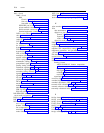
GLOSSARY
GL-21
unrestricted
channel
unrestricted
digital data
user-to-user
information
(UUI) exchange
user-to-user
information
transfer
UUI
via-net loss
(VNL)
visual
maintenance
and
administration
panel (VMAAP)
VNL
voice-grade
data
WATS (Wide
Area
X.25
ZCS
A B-channel that uses bipolar with 8-zero substitution (B8ZS) line coding and
that does not have a ones-density requirement for user data. See also restricted
channel.
User data that is presented to a transmission facility without having been
encoded to prevent an all-0s octet. Unrestricted digital data requires that the
transmission facilities use bipolar with 8-zero substitution (B8ZS) line coding on
and end-to-end basis; otherwise the data will potentially be destroyed. Also
called raw data.
A capability that allows customers to send and receive user information
transparently through an Integrated Services Digital Network (ISDN).
The transfer of special call-related information from the calling party to the
called party during certain call setup and disconnect messages.
See user-to-user information exchange.
One of the components used in the assignment of connecting losses for tie-trunk
links. Via-net loss (VNL) is calculated by means of a formula that factors in the
temporal delay experienced by a signal as it traverses the link. Networks
designed in this manner are called VNL networks.
A program running in the UNIX
®
operating system that emulates operations of
the maintenance and administration panel (MAAP) used with a System 85 and
DIMENSION
®
PBX. VMAAP can be used interactively like the MAAP. It
can also be called by another program. See also maintenance and
administration panel.
See via-net loss.
Data that is transmitted over a digital facility in analog form using pulse code
modulation (PCM). The data must pass through a modem, either at both ends
or at a modem pool at the far-end.
A service that allows calls to certain areas for a flat-rate charge based on
expected usage.
Telecommunications
Service)
wideband
More than one channel used to support a particular application. For example,
channel
six 64K-bps bandwidth channels can be grouped together to provide one 384K-
bps bandwidth channel.
NOTE: Wideband channel arrangements are not permitted with System 85
R2V4 phase 1.
A CCITT standard that specifies the interface between user data terminal
equipment (DTE) and data circuit-terminating equipment (DCE). See also
BX.25 and packet switching.
See
zero code suppression.



